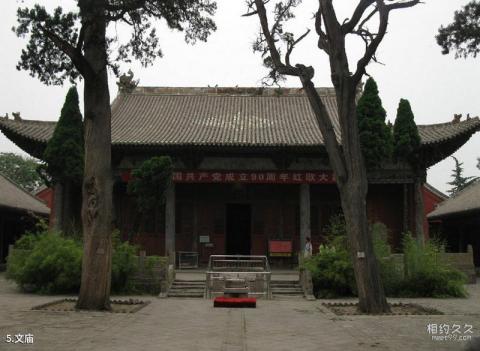
Introduction to the Confucian Temple: The Confucian Temple was first built in the Tang Dynasty and expanded to its current size in the fourth year of Hongwu in the Ming Dynasty (1371). Its standardized layout has been well preserved to this day. It is known as the most complete ancient Confucian temple complex in Shaanxi Province since the 14th century. , is also the fifth largest Confucius Temple in the country. In ancient times, it was a place to worship Confucius, the founder of Confucianism in the Spring and Autumn Period, and his disciples. It was also a school where Confucianism was taught to students. The Confucian Temple complex has five main buildings, Lingxing Gate, Jimen, Dacheng Hall, Minglun Hall, and Zunjing Pavilion as the central axis. It has four courtyards and 33 main and supporting buildings totaling more than 100 rooms. The architectural layout is rigorous, majestic and solemn, retaining the architectural styles of the Yuan, Ming and Qing Dynasties. Coupled with numerous door inscriptions, plaques and more than 40 ancient cypresses and locust trees that reflect the true meaning of Confucianism, the place looks green and full of vitality, deep and elegant. In June 2001, it was announced as a national key cultural relic protection unit.
